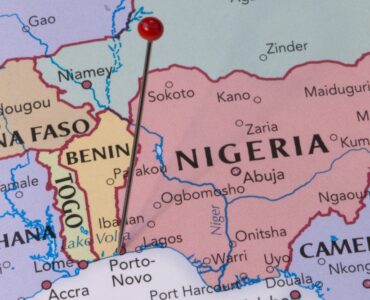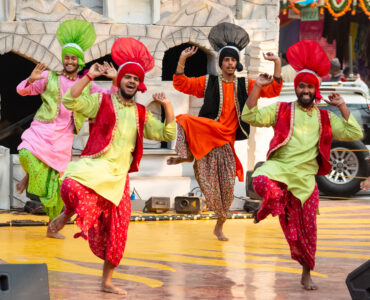Rhaeto-Romance, generally called Romansh, is a subfamily of the Romance languages. It has officially been the fourth national language of Switzerland since 1938. It is an official language in the Swiss canton of canton of Graubünden. In 2000 Romansh was recognized as the language which approximately 35,000 called it there mother tongue and approximately 61,000 used it as their primary language. The population censuses carried out between 2010 and 2014 cited Romansh as the primary language spoken by about 41,000 people.

The language is not spoken by many and is furthermore very complex. The complexity arose because the valleys of the Engadin are far apart and communication between the villages in the Engadin was difficult. Therefore, Romansh has been divided into five dialects, called idioms, each with its own standardized written language: High Engadinish (Puter), Low Engadinish (Vallader), Surmeirish (Surmiran, spoken in Surses and in the Albula Valley), Sutselvish (Sutsilvan, spoken in the anterior Rhine area) and Surselvish (Sursilvan, spoken in the anterior and posterior Rhine areas). In 1982 the common written language for the Romansh people, the controversial Rumantsch Grischun (RG), was created.
Romansh is above all used as a spoken language for most people. As all Romansh native speakers are at least bilingual and also speak German, the predominantly written language for the majority is German. However, there is a rich Romansh literature and the publishing house Chasa Editura Rumantscha was founded in 2010. Moreover, Romansh language newspapers have existed for more than 150 years. The Romansh paper with the largest circulation at the moment is the daily La Quotidiana. There is also a television company called Radiotelevisiun Svizra Rumantscha (RTR) with programs in Romansh. It is among other things responsible for broadcasting TV programs in Romansh, which can be watched on the Swiss channel SRF 1 with German subtitles. Some of these programs are also broadcast at the channels SRF info (with German subtitles) and RSI LA 2 (with Italian subtitles). The Romansh radio started 1925 and has been a part of RTR since 1954. The radio broadcasts 24 hours per day and almost only in Romansh. The exceptions are the German programs Rendez-vous and Echo der Zeit as well as the news from 00.00 to 5.00 pm. Currently, RTR also publishes the programs online on its news portal.
Another aspect of Romansch which should not be overlooked is its rich musical culture. Choirs have a long tradition in the Romansh-speaking areas. Today Romansh music also exists in many other genres like pop, rock, hip-hop, country, reggae, punk, chanson, schlager music and jazz.
The demand for professional Romansch translation exists for many different types of texts and for a wide range of clients. The translation service of the State Chancellery of the Canton of Grisons is responsible for translations into Romansh for the Grosser Rat of the Canton of Grisons (legislature), the Cantonal Government of the Canton of Grisons (executive), the State Chancellery of the Canton of Grisons as well as the other cantonal administrations. The types of text that are translated are: official texts of the Grosser Rat, the Cantonal Government, the States Chancellery as well as cantonal administrations, especially legal texts, governmental resolutions, departmental decrees, reports, press releases and correspondences.
The Swiss Federal Chancellery also translates some texts of the Federal Administration into Romansh. However, most of the texts that are translated into Romansh are done by the Lia Rumantscha, which is the umbrella association of all Romansh associations. When I worked at the Lia Rumantscha I translated among other things: texts for the teenage magazine SPICK from German into the Romansh idiom Sursilvan and the common written language Rumantsch Grischun (unfortunately the journal does not exist anymore in Romansh); complex technical texts for the project VerbaAlpina into Rumantsch Grischun (cross-linguistic online portal); texts from German into Rumantsch Grischun; the calendar of the Swiss Ornithological Institute from German into Rumantsch Grischun, texts for the platform nossaistorgia (photos and videos can be shared) from English, French and Italian into Rumantsch Grischun and texts from English into Rumantsch Grischun for a Chinese picture dictionary.
Since I started working as a freelance translator I have translated, among others, a picture dictionary from German into Rumantsch Grischun, a press release from German into Rumantsch Grischun, a package insert for a bracelet that can identify knockout drops from German into Rumantsch Grischun and subtitles for a institution that fights for the rights of the children.
Only 0.5% of the Swiss population speak Romansh. That is why it has been pronounced dead long time ago. However, the language is not dead, it lives.
About the author: Prisca Derungs is a professional Rhaeto-Rom (Romansch) translator. You can find more information about her here.






In 1961 I met a delightful lady who lived in a chateau above Colombier, a village near Neuchatel, whose name sounded something like Madame Chatelenar but that may not be the correct spelling. The person who introduced us told me Madame’s husband had an important role in having Romansh recognized as the fourth official language of Switzerland in 1938. Can you tell me the correct spelling for her name and the full name of her husband as well as anything known about his actual role in having Romansh recognized as an official language? Thanks very much.